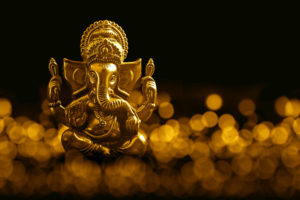 Hindus comprise nearly 80 percent of India’s population, numbering a little over 966 million people according to the most recent figures available from its central government. Conversely, there are only around 69,000 Zoroastrians in the country today. Most Hindu traditions propose the existence of multiple deities, while Zoroastrianism is chiefly a monotheistic faith. However, the two religions may share some fascinating commonalities and connections.
Hindus comprise nearly 80 percent of India’s population, numbering a little over 966 million people according to the most recent figures available from its central government. Conversely, there are only around 69,000 Zoroastrians in the country today. Most Hindu traditions propose the existence of multiple deities, while Zoroastrianism is chiefly a monotheistic faith. However, the two religions may share some fascinating commonalities and connections.
How Zoroastrians Settled in India
Despite their small population, Parsis occupy a significant place in India’s expansive history. The Encyclopedia Britannica clarifies that they’re descendants of Persian Zoroastrians who fled their homeland during the fall of the Sasanian Empire in the early seventh century C.E. When its new Muslim rulers instituted discriminatory laws, many left instead of converting to Islam. The Qissa-i Sanjan, an Arabic epic poem written around 1599 C.E., is the only existing written narrative of their flight to what is now modern-day Gujarat.
Vedic Hinduism and an Older Indo-Iranian Faith
Parsis have lived in India for more than 1,000 years, but linkages between their Zoroastrian faith and Hinduism existed several centuries before their arrival. The Encyclopaedia Iranica divulges that the Rig Veda, a collection of Sanskrit texts penned between 1500 and 1200 B.C.E., mentioned several divine entities governing the primeval chaos of the universe:
- Varuna, a “father asura” and sky deity
- Mitra, a companion of Varuna associated with justice, truth, and order
- Agni, the lord of fire and a messenger between deities and humans
- Indra, a king of Heaven and the god of lightning, thunder, and storms
- Soma, which can connote either a moon deity or a ritualistic drink
The Rig Veda calls these entities “asuras.” Moreover, the Encyclopaedia Iranica clarifies that an unnamed older Indo-Iranian god may be a counterpart to the dual deity Mitra-Varuna. Zoroaster may have called this unnamed deity “Ahura Mazda.”
Zoroastrianism’s Origins in Eastern Persia
According to BBC Religions, many scholars speculate that Zoroaster lived between 1500 and 1200 B.C.E. in eastern Persia. Both the Ancient History Encyclopedia and BBC Religions’ history of Hinduism divulge that the prevalent religion of Zoroaster’s time could have shared some key similarities with earlier Vedic spiritual practices:
- Ancestor worship
- Reverence for multiple deities
- Animal sacrifice
- Ritualistic use of intoxicants
Zoroaster’s denouncement of these practices, along with his disdain for the rigid class structure in which princes and priests controlled everyday life, caused his new faith to take a markedly different path. He taught a belief system in which Ahura Mazda was its wise, benevolent, and supreme deity. Zoroaster also insisted that the old Persian deities were destructive spirits unworthy of veneration and emphasized the need for every individual to choose a side in the struggle between good and evil.
Two Languages With Common Roots
Scholars have scrutinized linguistic similarities between Avestan religious writings and the Rig Veda. From these studies, they’ve proposed possible dates for Zoroaster’s lifetime and the creation of his faith. Sanskrit is classified as Indo-Aryan, whereas Avestan is a closely related Indo-Iranian language that developed during the late Bronze Age. Both are likely descended from an earlier Proto-Indo-Iranian tongue spoken in regions of the Eurasian Steppes around 4,000 years ago. Key similarities include the Vedic Sanskrit word “asura” and the Avestan “ahura.” Also, the Sanskrit “rta” and the Avestan “asa” could both be derived from an older Proto-Indo-Iranian word “Hr̥tás,” which means “truth.”
The spiritual practices of many civilizations did not emerge in isolation. Rather, they were influenced by ideas and customs from other surrounding cultures. The evolutionary paths of Vedic Hinduism and Zoroastrianism prove this point abundantly, but they also attest to how multiple traditions can develop from a single source. Not only that, they’re examples of how two totally different faiths can share similarities that are not apparent to a casual observer.

